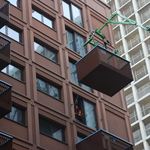reaperexpress
Senior Member
Yeah when they announced that the 2021 budget included $491 million for HFR-enabling works, I was really hoping that it would be allocated to track upgrades along the segments which are common to any HFR or HSR alignment, not to mention the existing alignment. But two years later do we have any idea where all that money is supposed to actually go?We all have our pet greenfield routings (mine is a route NE from Kingston to replace Brockville-Smiths Falls, along Hwy 15 then joining the hydro corridor to Smiths Falls) but when one looks at the infra in the Ottawa area one wonders how much additional and near term service and speed could be done by adding double track/passing loops and grade separations there. There is no greedy railroad baron to pay off, just the will to make it happen. There isn’t even the Ellwood Diamond (junction with O-Train) to consider any more.
The speeds in Ottawa are definitely lower than they need to be given the alignment. Here are the track speeds for Via trains around Ottawa (in mph) according to an old timetable I found.
10 mph = 16 km/h
20 mph = 32 km/h
35 mph = 56 km/h
40 mph = 64 km/h
45 mph = 72 km/h
60 mph = 97 km/h
I assume the 40 limit around Ellwood diamond has been lifted by now, but 45 mph is still way slower than the alignment could support. There are some sharp curves around the Rideau River bridge which may genuinely limit trains to 40 mph, but between there and the 20 mph curve the curves are orders of magnitude wider, so they should be able to support at least 60 mph.
VIA does seem to be protecting for a 60 mph track speed along that segment, based on this condition they imposed on the Ellwood Diamond Grade Separation project:
Increasing the track speed within the station to 20 mph instead of 10 mph would save about 30 seconds, which is a pretty good payoff for what I assume is just a signalling upgrade.
Last edited:




